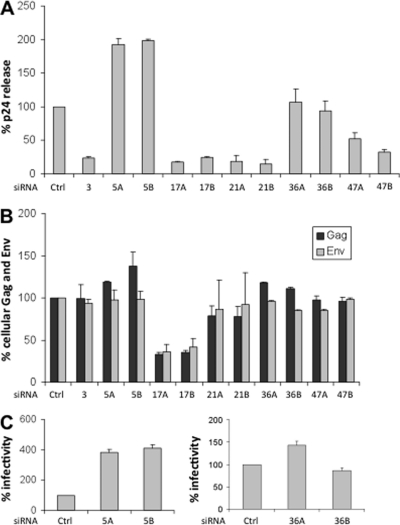Fig. 4.
Effects of DDX silencing on HIV-1 production and infectivity. TZM-bl cells were treated with control siRNA (Ctrl), or with each of two separate siRNAs for each target (labeled A and B). In the case of DDX3X, treatment involved a siRNA pool. Samples then were infected with HIV-1 clone R9 (NL4.3). At 48 h post-infection, samples were harvested and analyzed. Data shown is derived from 3 independent experiments, with triplicate samples for each siRNA. Error bars represent standard error. A, Virus production measured by p24 release into the culture medium. The p24 production was normalized to cell numbers and is scored as a percentage relative to cells treated with control siRNA. B, Gag and Env levels in infected cells. Lysates of infected cells were analyzed by Western blotting to detect Gag, Env and α-tubulin. Values of Gag and Env were normalized to α-tubulin, and are expressed as the percentage of expression relative to control siRNA treated cells. C, Infectivity of virus released into the medium of DDX-silenced cells. Samples of culture supernatant from cells treated with control siRNAs were normalized for p24 content and used to infect TZM-bl cells. Virus infectivity was measured by a luciferase assay 24 h after infection, and is scored as a percentage relative to control siRNA treated cells.

